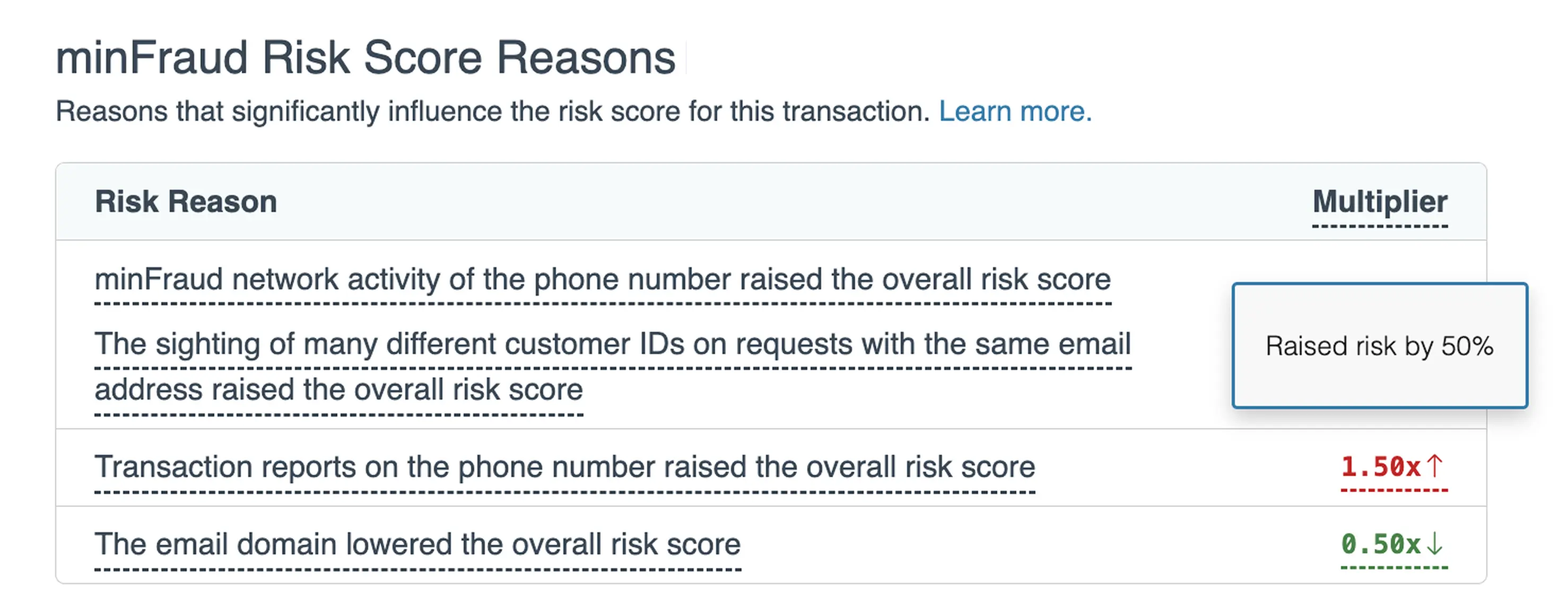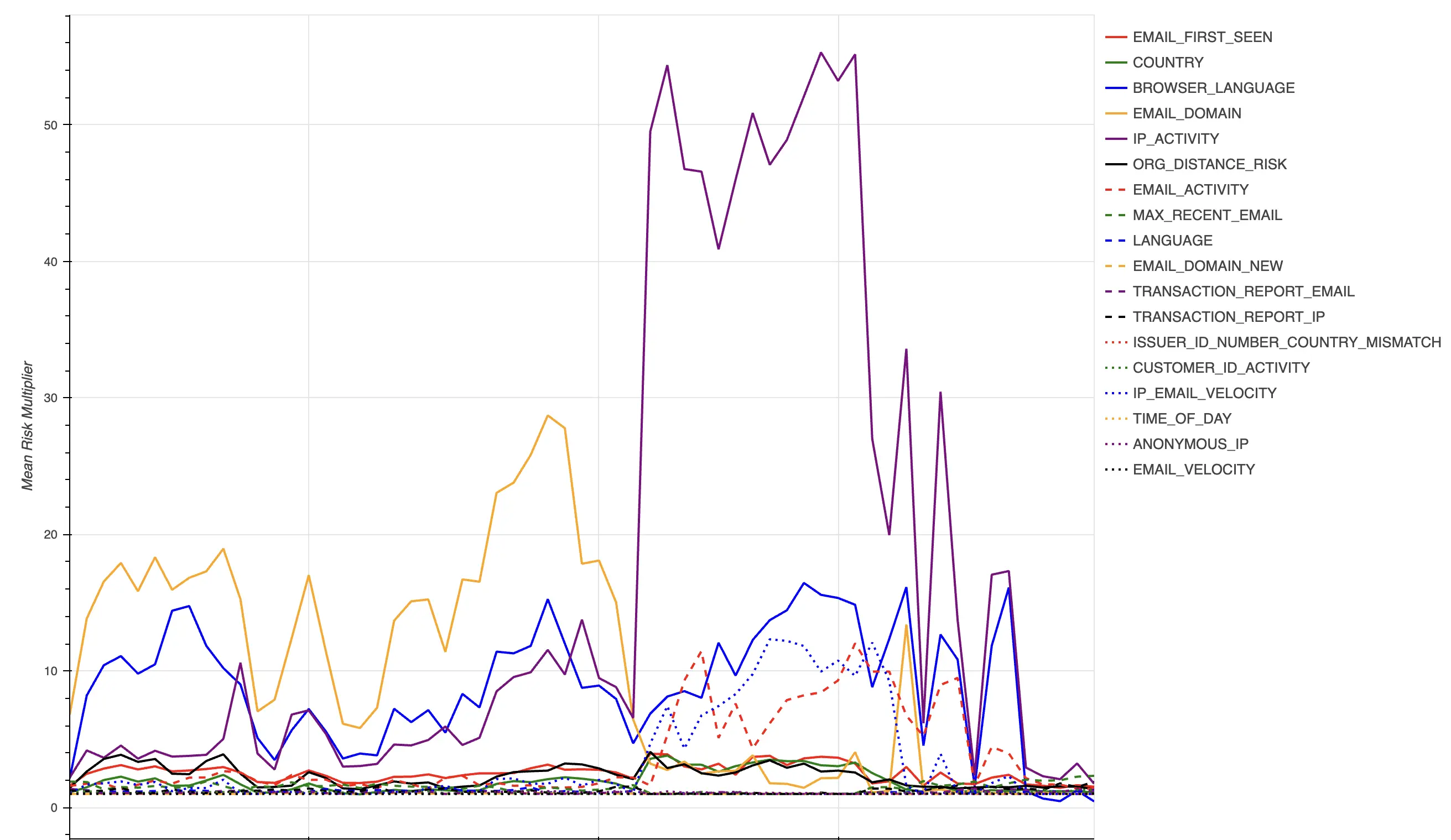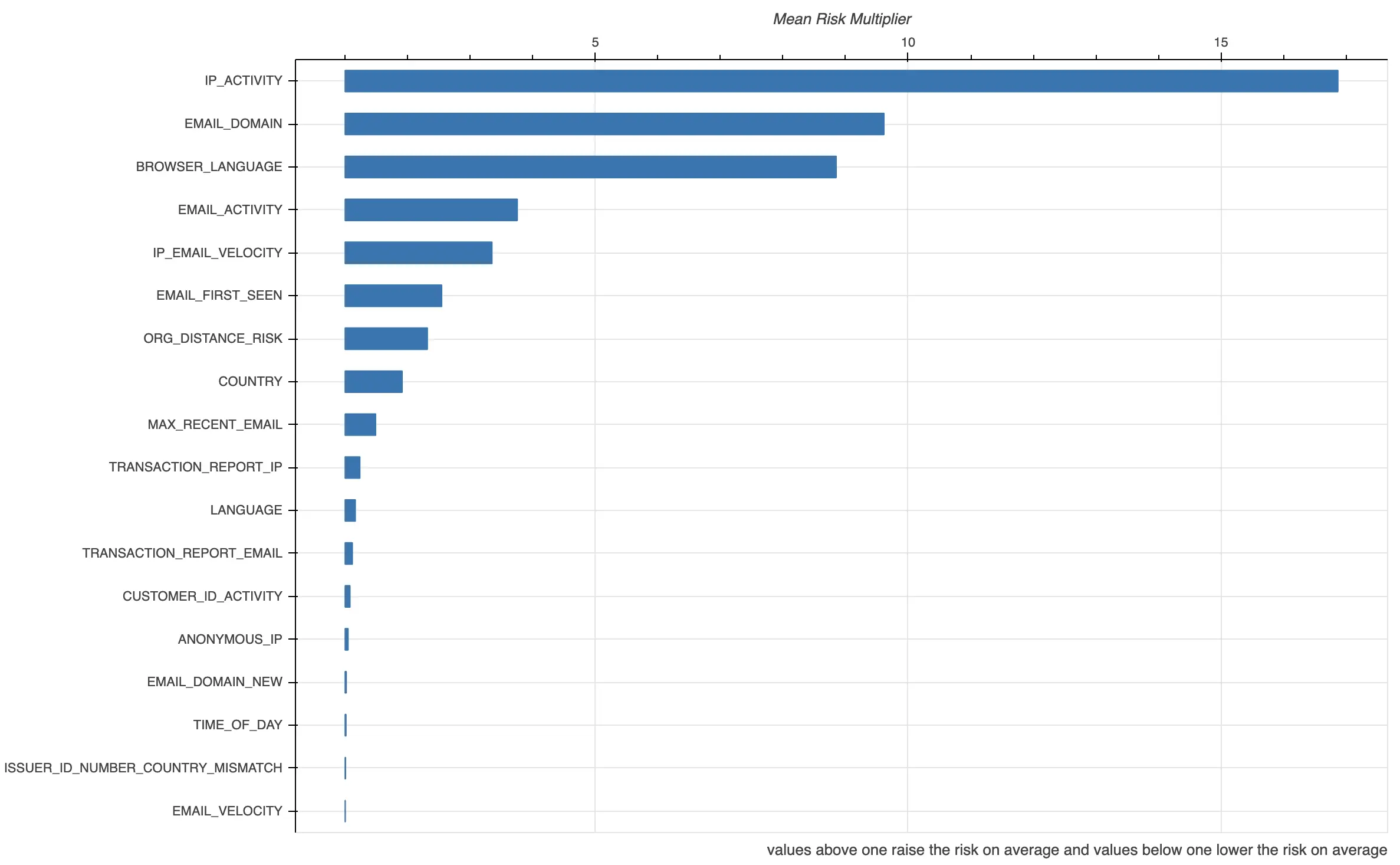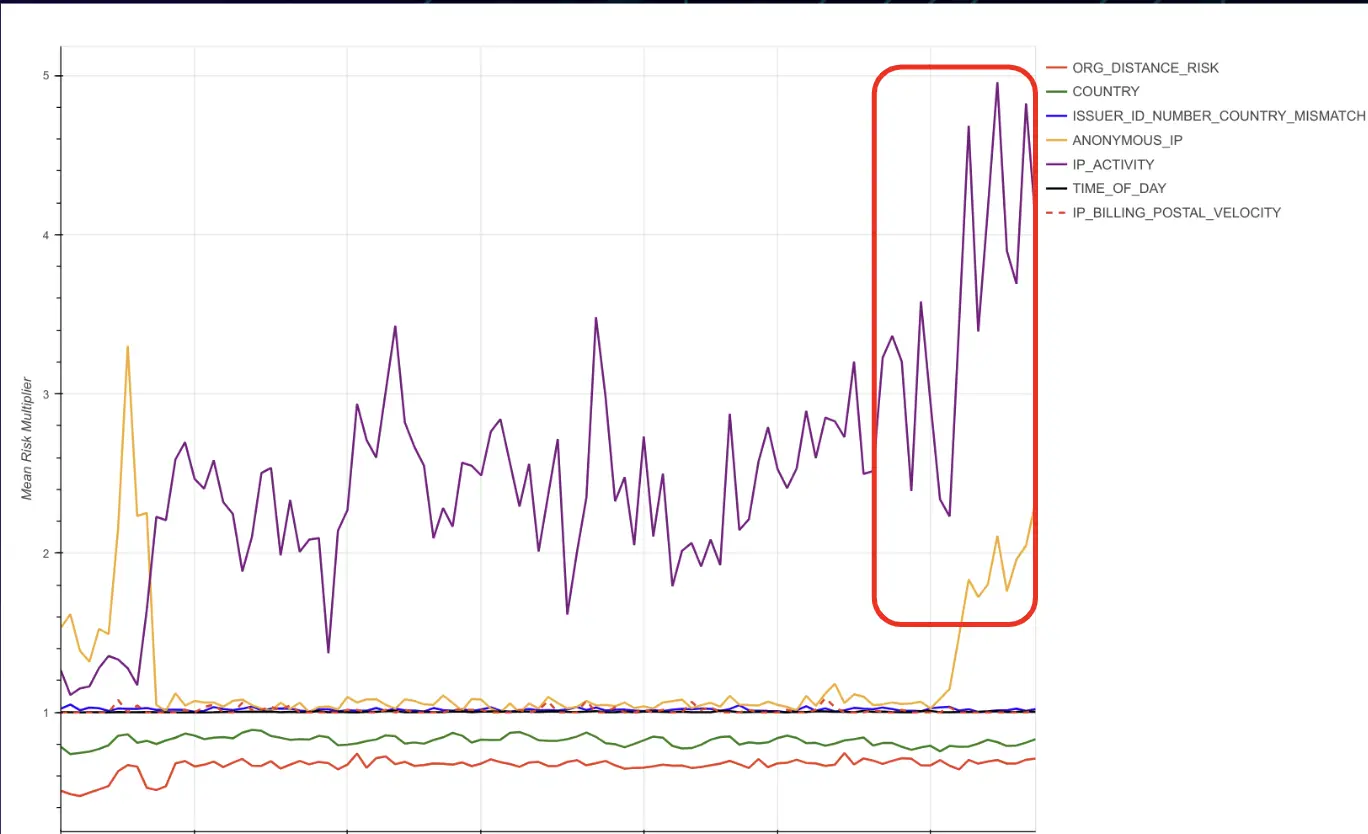Fraud has always been a covert war between cybercriminals and fraud teams.
With the rise of GenAI and increased access to sophisticated tools, it has unfortunately never been easier for bad actors to evolve and automate their attack patterns—succeeding in committing fraud, when before their attempts may have been repulsed by time-tested fraud prevention mechanisms.
Fraud teams must evolve as well, and equip themselves with critical fraud data that allows them to prioritize continuous improvement. In short, they absolutely must enhance their current fraud strategy to keep up with the (fraudulent) Joneses.
However, this kind of evolution has its challenges. One particular challenge is that the data and the methodology behind most fraud models are both often concealed or poorly explained. This can cause serious issues when—not if—new fraud risk patterns emerge and performance drops.
This realization, namely that most current fraud models are a black box, is what inspired the MaxMind minFraud team to introduce risk score reasons.
What are risk score reasons?
Risk score reasons are a set of data that provide users with specific and understandable reasons for why a risk score is high or low.
Here is an example of a demo transaction that has been determined to be high-risk.

We return a risk multiplier value in addition to a reason code and a human-readable string. Multipliers greater than 1.5 (risk increaser) and less than 0.66 (risk decreaser) are considered significant and lead to risk reason(s) being present.
Only risk score reasons that change the risk score significantly for a given transaction are returned. A list of current codes may be provided on request, and more reason codes may be added in future.
How to combat fraud with risk score reasons
Risk score reasons are a set of data that help fraud and risk professionals understand risk patterns for individual transactions and for their overall transaction stream, both at a point in time and over time. The detailed information provided by risk score reasons intends to transform the traditional black box process into a transparent one, giving fraud analysts insights into our fraud signals at a granular level.
Fraud patterns change constantly. Risk score reasons allow customers to identify which patterns are driving the scores and fine-tune specific aspects of their fraud strategy accordingly, allowing them to build powerful fraud models that continuously improve.
If you’re someone who values the ‘why’ behind fraud scoring, you’ll appreciate the insights provided by risk score reasons.
Case example #1
Aggregate risk score reasons allow for deeper investigation into the source of fraud. In the real-life example below, a MaxMind minFraud customer was able to isolate a pair of attacks based on the risk score reasons returned for individual transactions within that time frame.

In this image above, the yellow line is the average risk related to email domains, and the spike indicates fraud attempted with fake email domains. The purple line represents the average IP activity, and the spike indicates a high velocity bot attack, with IP addresses exhibiting significant and concurrent activity across the minFraud network.

Accessing risk score reasons
Risk score reasons are present in the API response for queries sent to the minFraud Factors service, ideal to feed into your ML fraud models. For more details, please see the technical documentation on our developer portal.
You can also manually view the risk score reasons for any individual transaction on the Transaction Details page in the Admin portal. This option is available to all tiers of the minFraud service.
Not yet a minFraud customer? Connect with one of our fraud experts to discuss how risk score reasons can support your use case(s).
Recommended use cases for risk score reasons
Here are some suggestions for how risk score reasons can help you to enhance your fraud strategy:
Forensic investigation
If you question the accuracy of a score for any reason, the risk score reasons can give you an understanding of what our model is doing. The multipliers give you a sense of the relative magnitude of each reason, and how they impact the overall score.
Post-incident analysis
Take the mean multiplier of risk score reasons to get insight into what is driving the score for a given snapshot of time. You can analyze a specific target class, such as false negatives or false positives.
Pattern analysis over time
Fraud patterns change constantly, so you can identify which patterns are driving the scores and adjust specific aspects of your fraud strategy accordingly.
Feature data for your risk models
Surface new features that add lift to your machine learning (ML) models with over 30 data points that we consider high-signal for fraud and risk applications.
Case example #2
In the real-life example below, another minFraud customer was able to pinpoint an increase in IP activity risk (purple spike) to a bot attack involving anonymous IPs (yellow) which led to an increase in payment card declines.

Information sharing and its role in fraud detection
MaxMind is more than a fraud prevention tool; we are an active partner.
We strive for better performance and better outcomes for our customers, and we know that the path to continuous improvement in performance is plain and simple, yet often overlooked or underutilized.
That path is effective information sharing, which ranges from the breadth and quality of inputs that you share with us to the machine-learning powered predictions and data enrichment we provide to you. A secondary element is the exchange of “truth” labels, i.e. whether a transaction is truly fraudulent or not, and the greater context that customers feed back to us.
Cybercriminals have been known to share information with each other to strengthen their attacks. Taking the same approach with your partners can help you fight fraud more effectively and efficiently. Learn how to enhance your fraud strategy with minFraud risk score reasons.


